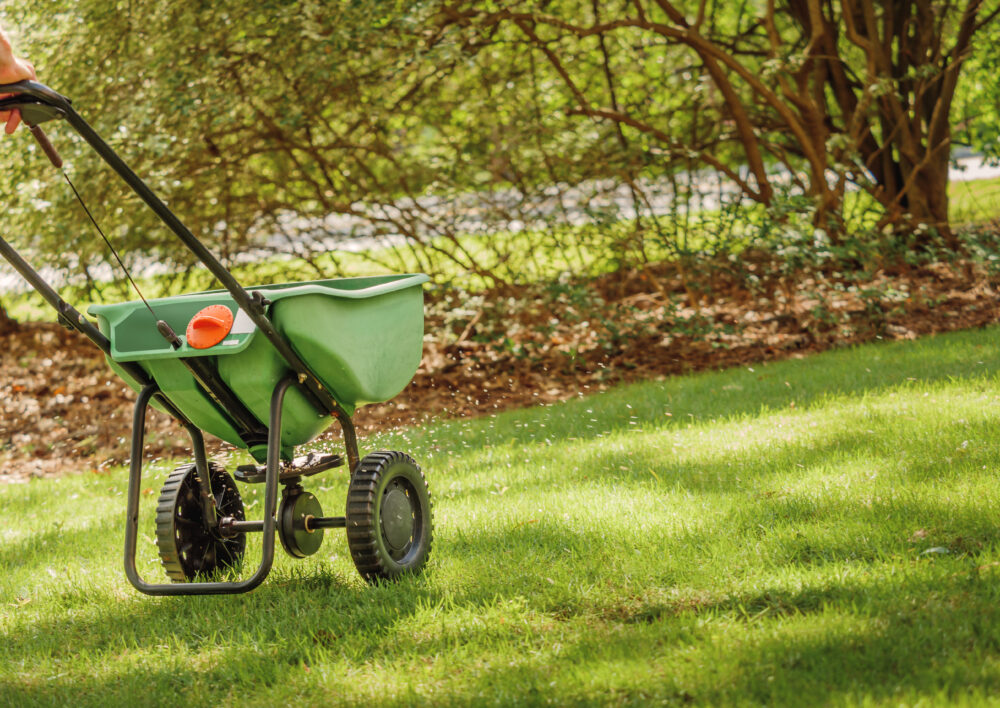Over-Fertilization: Signs, Symptoms, and Solutions
How to Avoid Fertilizer Burn and Repair Your Texas Lawn
The desire for a picture-perfect lawn can sometimes lead homeowners down a dangerous path: the belief that more fertilizer equals greener grass. Unfortunately, this “more is better” mentality has turned countless beautiful Texas lawns into brown, patchy disasters that require expensive repairs or complete replacement.
At Abracadabra Lawn Pest & Weed Control, we’ve spent years rescuing over-fertilized lawns throughout North Texas. Our expertise in North Texas soil conditions—particularly the challenging clay soils with high pH levels—has taught us that successful fertilization is about precision, not quantity. Most of our black clay in North Texas has a pH from 7.5 to 8.1, and high pH leads to fertilizer “lock up” and exponentially worse disease spread.
Our team has developed proven diagnostic techniques to identify over-fertilization symptoms before they become permanent damage, and we’ve perfected recovery strategies that work specifically with Texas soil conditions and climate. Whether you’re dealing with localized fertilizer spills or lawn-wide over-application, our comprehensive approach addresses both immediate symptoms and underlying soil imbalances.

Understanding Over-Fertilization in Texas Lawns
Over-fertilization occurs when the concentration of soluble salts in lawn fertilizers exceeds what your lawn can absorb. When you apply too much fertilizer, the excess salts draw moisture away from the grass, leading to “fertilizer burn.” This process dehydrates and kills grass cells, similar to how salt preserves food by removing moisture.
Why Texas Lawns Are More Susceptible:
- Clay soil compaction restricts nutrient movement
- High pH levels prevent proper nutrient absorption
- Intense summer heat increases stress on compromised grass
- Clay soils hold nutrients well but create lockup conditions
Recognizing the Warning Signs
Immediate Visual Symptoms The most recognizable sign is the crusting of fertilizer on top of the soil—a white, crusty consistency indicating fertilizer buildup. When fertilizers containing soluble salts are watered in, water evaporates leaving salts on the surface.
Fertilizer Burn Patterns If you’ve accidentally spilled fertilizer, you know what fertilizer burn looks like: scorched areas that are crispy and yellow or brown. Brown grass is a clear sign of excess fertilizer, especially nitrogen, occurring when nutrient concentration overwhelms and kills the grass.
Early Warning Signs:
- Brown or yellow tips on grass blades
- Stunted growth despite adequate watering
- Grass that feels stiffer or more brittle
- Fertilizer crusting on soil surface instead of penetrating
- Excessive but weak grass growth that attracts pests
Emergency Response and Treatment
Immediate Damage Assessment First, inspect the damage scope. Is the entire lawn impacted or just areas? Check how much of the grass blades are affected—are the roots still healthy, or just blade tips burned? If roots remain healthy, you might reverse the over-fertilization.
Physical Removal Remove any visible excess fertilizer immediately. For granular products, sweep it out with a broom. For spilled areas, rake up concentrated fertilizer or spread it out and water thoroughly.
Intensive Watering Protocol The most critical treatment step is aggressive watering to flush excess salts from soil. Water affected areas with at least one inch daily for one week, applying slowly to ensure deep soil penetration. Continue monitoring for new growth after the first week and delay all mowing during recovery.
Long-Term Recovery and Prevention
Soil Rehabilitation For severe damage, soil amendments may be necessary. Aeration facilitates better water and nutrient absorption, helping alleviate compaction. Gypsum application improves clay soil structure and quality.
Professional Soil Testing Before recovery efforts, comprehensive soil testing reveals nutrient imbalances and pH issues. Our laboratory analysis provides detailed information about current nutrient levels and specific correction recommendations.
Reseeding When Necessary If grass has died completely, remove excess fertilizer and add fresh topsoil before overseeding. Follow up with daily watering and starter fertilizer at reduced rates to avoid repeating problems.
Texas-Specific Best Practices
Clay Soil Considerations Clay soils common in North Texas hold nutrients well but may need supplemental iron for green color. Consider iron applications separate from routine fertilization, especially if your lawn shows yellowing despite adequate nitrogen.
Seasonal Timing Don’t apply too much nitrogen in spring—excessive spring nitrogen makes grass susceptible to summer diseases and pests. In Texas, high heat combined with high-nitrogen fertilizer stresses grass and increases disease risk during summer.
Prevention Through Precision Our prevention approach uses soil testing-based fertilization schedules accounting for North Texas conditions. We use balanced, slow-release fertilizers providing steady nutrition without shocking grass systems, timing applications with optimal growing conditions.
The Hidden Costs
Beyond aesthetic damage, over-fertilization creates cascading problems affecting long-term lawn health. Stressed grass from excessive fertilizers attracts pests and creates environments conducive to fungal diseases, leading to additional treatment costs.
Over-fertilization also contributes to environmental problems through nutrient runoff, affecting water quality and potentially resulting in municipal fertilizer restrictions.
Don’t let over-fertilization destroy your Texas lawn investment! If you suspect fertilizer burn or want to prevent over-fertilization problems, contact Abracadabra Lawn Pest & Weed Control today. Our soil testing and precision fertilization programs are specifically designed for North Texas clay soils and growing conditions. We’ll help you achieve the healthy, green lawn you want without the risks of over-fertilization. Call us now for your comprehensive soil analysis and customized fertilization plan!

